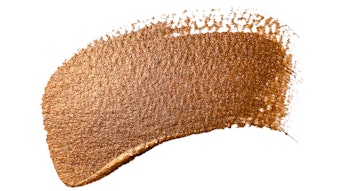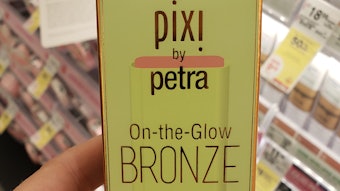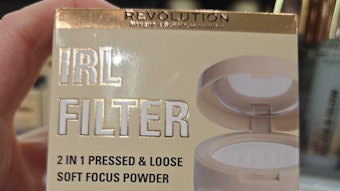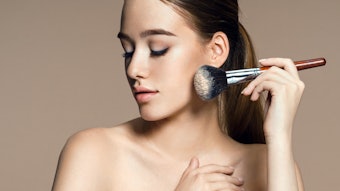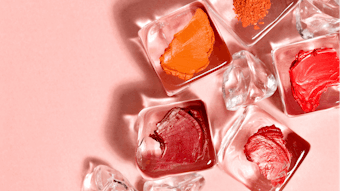Mica is a naturally occurring silicate mineral. It is a fine, off-white and pearly powder and in cosmetics, it is used to impart a shiny and transparency appearance to products. This is due to the fact that mica adheres well to skin and reflects light, making skin appear more luminous. Therefore, it is the main ingredient applied in facial powders, especially those that are transparent.
Log in to view the full article
Mica is a naturally occurring silicate mineral. It is a fine, off-white and pearly powder and in cosmetics, it is used to impart a shiny and transparency appearance to products. This is due to the fact that mica adheres well to skin and reflects light, making skin appear more luminous. Therefore, it is the main ingredient applied in facial powders, especially those that are transparent.
Found in many women’s makeup bags, facial powder is one of the most essential cosmetic products. It is generally available in two forms, loose and pressed, and may provide full or transparent coverage. Full-coverage powders predominantly contain talc (hydrated magnesium silicate) with other covering substances including titanium dioxide, kaolin, magnesium carbonate, magnesium stearate, zinc stearate and cornstarch to increase opaqueness. Some of these ingredients may also provide additional functions. For example, magnesium carbonate can improve oil blotting, keep the powder fluffy and absorb any added perfume; kaolin (hydrated aluminium silicate) may help absorb oil and perspiration. Today’s transparent powders are based on the same formula as full-coverage powders but include less talc and covering pigments. Instead, their light, shiny appearance is produced by nacreous pigments such as mica, bismuth oxychloride, titanium dioxide-coated mica or crystalline calcium carbonate.1
The main purpose of facial powder is to improve the appearance of skin, and the application of powder tends to be an easy and fast way to cover complexion imperfections, absorb grease and oils, and give a smooth, matte finish to the face. Due to this convenience, facial powder was chosen as the product form into which proliposome-coated mica without bioactives (PCM) and with bioactives (PCMB) were incorporated, to provide skin care benefits beyond camouflage effects.
Proliposomes
Proliposomes are prepared by drying liposome dispersions. Generally, liposomes are composed of one or more phospholipid bilayers and have an aqueous cavity that can entrap, protect and deliver both water- and oil-soluble substances.2, 3 In the present study, hop cone and myrobalan fruit extracts, which are evidenced to have antioxidant activity and claimed to have skin-whitening/-lightening potential (see Table 1),4–7 were loaded into proliposomes.
While a number of studies have shown that liposomes can provide moisturizing benefits when applied to skin,8, 9 one problem they face in liquid form is instability, i.e., the degradation of phospholipids by oxidation and hydrolysis.10 To increase stability, liposome dispersions are thus extensively dried by freeze- or spray-drying to transform liposomes to dry powder proliposomes. Since spray-drying is a less time-consuming process that is practical for large-scale production,11, 12 this method was chosen for the present study to transform dispersions of liposome-coated mica without bioactives and with bioactives to PCM and PCMB, respectively, which were then employed in facial powders. The formulated facial powders were subsequently tested for skin-smoothing, moisturizing and lightening effects, described here.
Materials and Methods
Liposome dispersions: Liposome vesicles were first prepared. A lecithin mixturea was combined with hop cone extractb and dispersed, hydrated with water containing myrobalan fruit extractc, and homogenized (10,000 rpm, 10 min) to produce forced lecithin hydration and subsequent liposome formation. These concentrated liposomes were diluted with water to give the final concentrations of hop cone extract and myrobalan fruit extract in liposome dispersions of 10% and 2.5%, respectively. Liposomes without bioactive loading served as the control. The mean particle size and size distribution of loaded and unloaded bioactive liposome dispersions were then measured by laser diffractiond; the mean particle size was expressed as volume diameter of 50% [d (0.5)], whereas the size distribution was described by SPAN value—a statistical parameter used for evaluating particle size distribution. Images of the dispersions were further observed by a light microscopee equipped with a digital camera.
Proliposome coated mica: As noted, liposome dispersions with and without bioactives were used for mica coating to prepare proliposome-coated mica. After micaf was thoroughly suspended in the dispersions described, the suspensions were separately spray-dried using a mini spray-dryerg with the final outlet temperature of 85°C. The resulting powders were measured for mean particle size, again by laser diffraction. Non-coated mica was also measured via the same technique, for comparison. These substances were further observed for their surface morphology using a scanning electron microscope (SEM)h.
Moisturization studies: In a moisturization study, PCM was compared with non-coated mica to determine whether the hydration potential of PCM was based on its liposome content rather than its actives. Twenty volunteers applied 2 mg/cm2 of the two test substances on each on their forearms, and both treated and untreated areas were measured by corneometerj for moisture levels at 0, 1, 2, 4, 6 and 8 hr. Statistical evaluations were made by one-way analysis of variance at a 95% confidence level.
Penetration studies: The capability of PCM and PCMB to penetrate the stratum corneum in comparison with non-coated mica was also assessed. The studies were carried out by tapestripping. As a preliminary study, five separate volunteers were evaluated. Two hours after volunteers applied the test substances, adhesive tapes were used to sequentially remove layers of the stratum corneum from their forearms. These samples were observed under SEM, and the fifth strip was chosen for photographing.
Facial powder: PCM, PCMB and non-coated mica were separately formulated into facial powders (see Formula 1). After homogeneous mixing, the bulks were separately pressed and compacted in preparation for application to the face.
Sensory studies: Sensory evaluations were performed in 20 volunteers, ages 20–50, using only non-coated micacontaining and PCMB-containing facial powders. After applying each of the two powders to one-half of their faces, subjects scored the powders for spreadability, brightness, coverage, duration, smoothness and uniformity. The mean score of these self-evaluations was expressed in a radar chart. Additionally, the smoothness of PCMB and non-coated mica facial powders was tested on artificial black skink made from double layers of urethane elastomer, and also on human forearm skin. The character of the powder film after application was visually observed and photographed.
Lightening efficacy: Twenty volunteers, ages 18–50, with medium and dark skin were evaluated for the lightening efficacy of the PCMB facial powder. Before any test powder was applied, volunteers’ skin was measured by chromameterm for skin lightness (L*). The test PCMB facial powder was then applied to the whole face twice daily for up to four weeks. Subjects’ facial skin was again measured by chromameter for L* at weeks two and four; statistical significance was conducted by a student’s paired t-test at 95% confidence level.
Data and Discussion
Liposome dispersions: The appearance of liposome dispersions with and without bioactives was opaque (milky) and translucent yellowish, respectively. The particle size of the former was shown to be larger than the latter. Figure 1 reveals that the particle sizes and size distributions of liposomes with and without bioactives were 1.411 μm and 0.231 μm, respectively, with the SPAN value of 0.65 and 1.744, respectively. This means the size of the liposomes is likely to be influenced by the loaded bioactives.
Under the light microscope, liposome dispersions with and without bioactives were both detected to be spherical, as shown in Figure 2. In this figure, the larger size of the former is also shown.
Proliposome-coated mica: From liposome dispersions, PCM and PCMB were prepared. The appearance of both powders after spray-drying was off-white. Non-coated mica was used as the control throughout the study. Table 2 shows that the particle sizes and size distributions of non-coated mica, PCM and PCMB were 11.232 μm, 12.763 μm and 20.130 μm, respectively, with the SPAN value of 1.841, 2.252 and 2.282, respectively. Again, the mean particle size of PCMB was shown to be larger than that of PCM.
Under SEM, the difference between PCM and non-coated mica was difficult to detect. PCMB was differentiated visually from non-coated mica, as shown in Figure 3. The smoother edges and surface were observed in PCMB, which would be due to the thin film formation of proliposomes after coverage on the mica surface. This appearance was primarily expected to make PCMB be able to provide smoother application on skin.
Moisturization studies: In the hydration study comparing PCM with non-coated mica, Figure 4 reveals that the moisture content of skin to which PCM was applied increased significantly, compared with the application of non-coated mica and the untreated area that served as the control (p < 0.05). This improvement in skin hydration was remarkably detected within the first two hours of product application. The contribution could be attributed to proliposomes in the PCM that were hydrated by skin moisture to make them act as liposomes in forming film on skin to protect and provide moisturizing benefits.8, 9 These results seem to support the moisture-providing benefit of PCMB in facial powder.
Penetration studies: In studying the penetration capability of PCMB, PCM and non-coated mica into the stratum corneum, results showed that non-coated mica was not observed on the fifth strip of adhesive tape. This is likely because mica does not show penetrating ability when applied to skin. On the contrary, PCMB was observed on the fifth tape strip. This would be due to the proliposomes being hydrated by skin moisture to make them behave as liposomes and penetrate into the stratum corneum. PCM was unfortunately undetected due to its small size and the limited magnifying power of the SEM. With the SEM model used, the highest magnification was 30,000 times and the particle size of the PCMB was 1.411 μm while that of the PCM was 0.231 μm. Figure 5 therefore reveals SEM images of the fifth tape strips taken from PCMB and non-coated mica applied areas only.
It was therefore reasoned that the penetration of liposomes with the bioactives, obtained from hydrated PCMB, could provide facial powders with the ability to deliver bioactives into the skin. To confirm the penetration capability of PCMB in terms of liposomes with bioactives, new studies will be conducted to remove deeper skin layers by adhesive tape strips, as will new in vitro tests be conducted to evaluate the permeation of the extracts in PCM into the skin via the Franz diffusion cell technique.
Sensory studies: The sensory evaluations of PCMB and non-coated mica facial powders were plotted in a radar chart (see Figure 6), which shows that volunteers preferred the PCMB powder for its smoothness first, followed by its uniformity and spreadability. This ability of PCMB to impart a smooth film in facial powder was confirmed by testing it on artificial black skin and human forearm skin using non-mica coated facial powder as the compared product. Figure 7 reveals that PCMB imparted a smoother film on both substrates.
Lightening efficacy: Figure 8 shows the skin-lightening efficacy of the PCMB facial powder before and after application. The lightening effect imparted by the product was found to be significant at week four (p < 0.05). This result is likely to support the hypothesis that PCMB facial powder could help improve skin lightening. This outcome would be expected to result from the whitening/lightening botanical extracts entrapped in proliposomes and delivered into skin; however, more studies must be performed to confirm this benefit.
Conclusions
The present study reveals that dry powders of PCM and PCMB can be successfully produced from spraydrying liposome-coated mica without and with bioactives, respectively, the latter of which was shown to have larger particle sizes. When applied to skin, PCMB containing hop cone and myrobalan extracts as skin-whitening/ lightening ingredients was shown to have penetration capability through the stratum corneum and exhibited moisturizing potential.
When incorporated into a facial powder formulation, the product was rated to be the most preferred by volunteers for its smoothness, uniformity and spreadability, compared with facial powder containing non-coated mica. Interestingly, PCMB facial powder was also found to lighten the skin after four weeks of application.
Results of the described study therefore show that facial powder containing effective, permeable and suitable skin care ingredients can provide skin care as well as camouflage benefits. However, more studies are required to confirm the usefulness of PCMB in facial powder as simultaneous makeup and skin care aspects.
References
- J Cunningham, Color cosmetics, in: Cosmetics and Toiletries Industry, 2nd edn (1996) pp 149–182
- MB Pierre and I Dos Santos Miranda Costa, Liposomal systems as drug delivery vehicles for dermal and transdermal applications, Arch Dermatol Res 303(9) 607–621 (2011)
- SH Jung, YS Cho, SS Jun, JS Koo, HG Cheon and BC Shin, Topical application of liposomal cobalamin hydrogel for atopic dermatitis therapy, Pharmazie 66(6) 430–435 (2011)
- M Chulasiri et al, Utilizing hydroglycolic extract from myrobalan fruits to counteract reactive oxygen species, Int J Cosmetic Sci 33(4) 371–376 (2011)
- K Krofta, A MikyŠka and D HaŠková, Antioxidant characteristics of hops and hop products, J Inst Brew 114(2) 160–166 (2008)
- G Imokawa, Y Yada, M Kimura and N Morisaki, Granulocyte/macrophage colony-stimulating factor is an intrinsic keratinocyte-derived growth factor for human melanocytes in UVAinduced melanosis, Am Acad Dermatol 313(2) 625–631 (1996)
- M Chulasiri, Increase resistance to photoaging under sunny activities with ingestible and topical nutrients, in: Nutrition and Physical Activity in Aging, Obesity and Cancer, Session 1, NAPA 20 (2009)
- G Betz, A Aeppli, N Menshutina and H Leuenerger, In vivo comparison of various liposome formulations for cosmetic application, Int J Pharm 296(1-2) 44–54 (2005)
- P Basnet, H Hussain, I Tho and N Skalko- Basnet, Liposomal delivery system enhances anti-inflammatory properties of curcumin, J Pharm Sci 101(2) 598–609 (2012)
- R Margalit and N Yerushalmi, Pharmaceutical aspects of liposomes: Academic and industrial-microencapsulation methods and industrial applications, S Benita, ed, Taylor & Francis, NY, USA (2006) pp 317–340
- P Goldbach, H Brochart and A Stamm, Spray-drying of liposomes for a pulmonary administration. I. Chemical stability of phospholipids, Drug Dev Ind Pharm 19(19) 2611–2622 (1993)
- N Skalko-Basnet, Z Pavelic and M Becirevic- Lacan, Liposomes containing drug and cyclodextrin prepared by the one-step spraydrying method DDIP, Drug Dev Ind Pharm 26 (12) 1279–1284 (2000)




